Store
Hours
|
 |
KA on
WTTV
|
| Just in case
you missed our latest TV segments on Ch. 7/WTVW, you
can still access the recipes at our website.
|
Bring a
Bag
|
BRING
A BAG, SAVE
A TREE, FEED
A FAMILY!

Over $850 was
raised in 2009! Thank
You!
Each time
you make a purchase and don't need a bag, or provide your own, we
will donate ten cents to the Tri-State Food Bank. If you don't need
a bag, watch us drop a dime in the jar on the counter. We thank you,
and the Tri-State's neediest families thank you,
too. ALL DONATIONS IN OUR JAR
WILL GO TO THE TRI-STATE FOOD
BANK! | |
|
Degrees of
Green
|
In forty years of
Earth Days, we've learned a lot! Yet, our individual impact on the
planet is one of those topics where the more we know, the more we
realize what we don't know! Whatever your motivation for becoming
greener in your lifestyle, the power of incremental change can bring
enormous benefits to you individually, and collectively to the
planet. Green 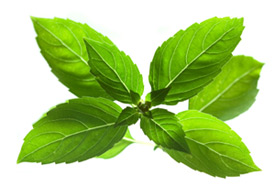 kitchen habits save energy, help maintain
sustainable environments, and can save money! kitchen habits save energy, help maintain
sustainable environments, and can save money!
Green isn't
just trendy; it's smart and thrifty! Doing things differently --
more green -- in the kitchen doesn't have to affect quality, nor
decrease enjoyment. In this
issue, we pick a few of our favorite "green" tips for
cooking and cleaning green. We demonstrate some of these green
tricks right away in three easy, appetizing
recipes.
|
Earth Day
Special
|
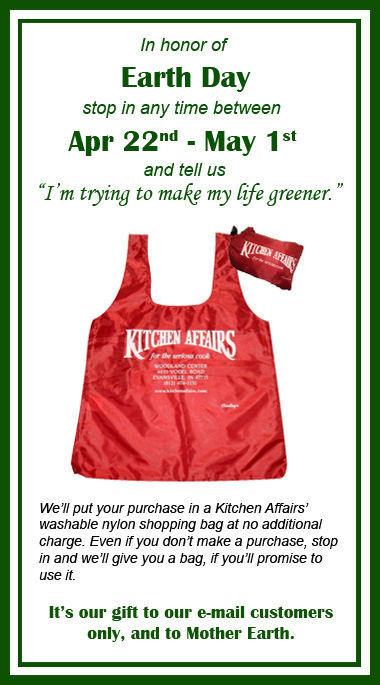
|
Spring
Cooking Class Schedule Launches
|
The Kitchen
Affairs' Spring 2010 Cooking Class Schedule is underway!
There's something for everyone in this fantastic collection of
classes. From basic to advanced, and from young to old, you'll
enjoy spending time in the kitchen!
Find out all of the
details at the Kitchen Affairs
website!
Or, click here to
download the most recent printed newsletter:
Spring 2010
Class Schedule and Newsletter (PDF
format).
Here
are just a few of the class offerings coming up soon:
Saturday, Apr. 24 - 9:30 a.m. - With an Italian Accent with Nina
McGill. $42
Tuesday, Apr. 27
- 6:30 p.m. - Red, White & Green Pizzas with
David Pampuch. $45
Thursday,
Apr. 29 - 6:30 p.m.- A New Mexican Dinner with Shelly
Sackett. $42
CELEBRITY
CHEF CLASS:
Sunday, May 2
- 1:30 p.m.- Crusted Pork Loin with Virginia
Willis. $60
CELEBRITY
CHEF CLASS:
Monday, May 3
- 6:30 p.m.- Mother Sauces with Virginia
Willis. $70
| |
No Pain, All Gain -- Trimming the Kitchen
Footprint
|
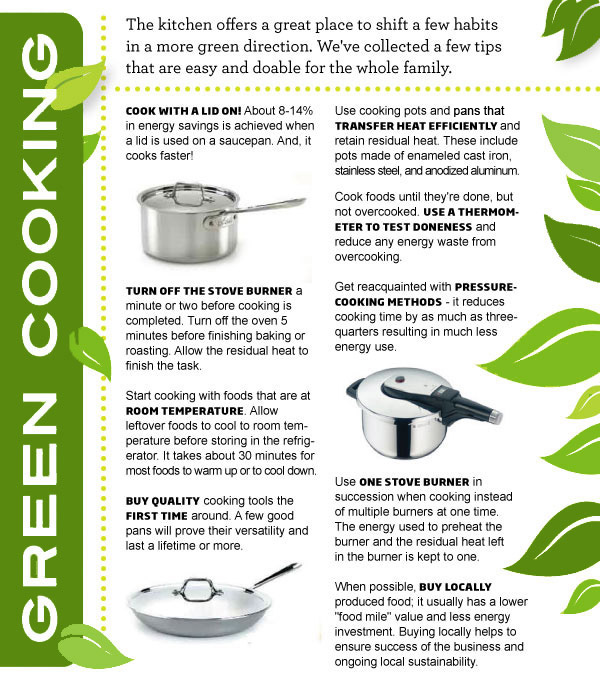
|
Green
Cleaning
|
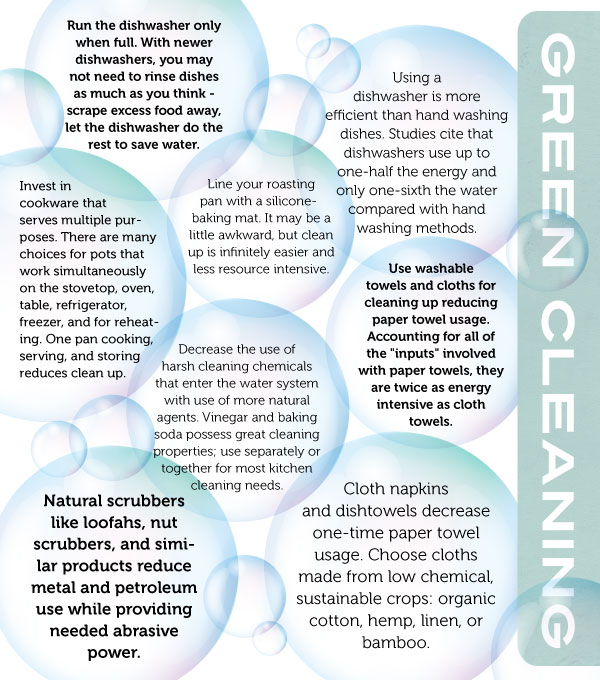
|
Reduce, Reuse,
Repurpose, and Recycle
|
During our lifetimes,
each of us will produce about 45 tons of garbage. That's a
staggering quantity of "stuff" discarded. With a little effort, the
amount of "stuff" we use can be reduced, reused, repurposed, or
recycled.
Reduce - Buy
less packaging, put several produce items in one produce bag, buy
loose fruit and vegetables in usable quantities instead of
prepackaged units. Buy in bulk, then refill containers.
Reuse - Carry
reusable tote bags to the market and all shopping stops; keep
compact nylon bags in your purse or glove compartment.
Repurpose -
Some food packaging can be used again, e.g., today's empty
bread bag, carries tomorrow's sandwich to work.
Recycle - Clean
and separate food packaging for local recycling.
 Composting-
This type of recycling is an easier habit that you might think.
Plant-based food scraps can be easily composted at home diverting
valuable organic material from landfills where the material will not
be available for use again. Keep a compost pail near the kitchen
sink and add food scraps. Compost pails are equipped with a charcoal
filter in the lid to eliminate any odors between emptyings. Compost
pail contents may be Composting-
This type of recycling is an easier habit that you might think.
Plant-based food scraps can be easily composted at home diverting
valuable organic material from landfills where the material will not
be available for use again. Keep a compost pail near the kitchen
sink and add food scraps. Compost pails are equipped with a charcoal
filter in the lid to eliminate any odors between emptyings. Compost
pail contents may be  dumped outside in a compost pile
or bin, or taken to a local compost recycling location. The
decomposed organic matter becomes rich dirt that yard plants love.
Here's a good link to a Beginner's Guide to
composting. dumped outside in a compost pile
or bin, or taken to a local compost recycling location. The
decomposed organic matter becomes rich dirt that yard plants love.
Here's a good link to a Beginner's Guide to
composting.
What can be
composted? - Generally, any plant-based item can be
composted. This includes any fruit and vegetable trimmings, coffee
grounds (including the paper filter), and tea bags. With the
exception of eggshells, animal-based foods, (meat, fish, dairy,
fats), do not make for good compost and should be placed in the
garbage. Most packaging is not compostable - tin cans, plastic bags,
or bottles.
|
Mike's
Notes
|
At Kitchen
Affairs, we're always looking for "green" solutions to
problems, especially when they're more efficient than the older
products. We ordered a new line at March's Housewares show in
Chicago and we really like it, both for what it is, and for what it
does.
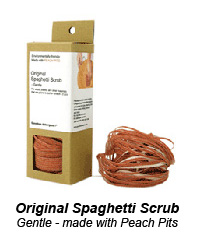 New Cleaning Tools- LEC
International makes a line of cleaning pads and scrubbers, all made
in Japan, and all environmentally friendly. The original product was
the Spaghetti Scrub, available in either Coarse, made from corn
cobs, or Gentle, made from peach pits. Both are like a handful of
abrasive spaghetti, except that they do a great job on your dishes,
plastic or wooden bowls, and even cookware, grill grates and your
kitchen sink! We also carry cleaning pads for polishing and removing
stains from enamel sinks, tubs and cookware, made from pumice
stones; for stainless steel or granite, made from recycled plastic;
and for removing burn marks or severe stains, made from aluminum
oxide. These range in price from $7.50 to $9.50, but they seem to
last forever, and they work better than anything else we've seen for
kitchen cleaning. New Cleaning Tools- LEC
International makes a line of cleaning pads and scrubbers, all made
in Japan, and all environmentally friendly. The original product was
the Spaghetti Scrub, available in either Coarse, made from corn
cobs, or Gentle, made from peach pits. Both are like a handful of
abrasive spaghetti, except that they do a great job on your dishes,
plastic or wooden bowls, and even cookware, grill grates and your
kitchen sink! We also carry cleaning pads for polishing and removing
stains from enamel sinks, tubs and cookware, made from pumice
stones; for stainless steel or granite, made from recycled plastic;
and for removing burn marks or severe stains, made from aluminum
oxide. These range in price from $7.50 to $9.50, but they seem to
last forever, and they work better than anything else we've seen for
kitchen cleaning. 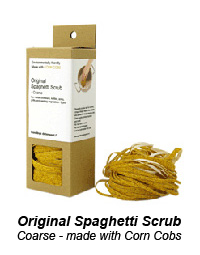 Stop in and let us show them to you. Shelly
says you can even clean a pan if you really want to . . .
. Stop in and let us show them to you. Shelly
says you can even clean a pan if you really want to . . .
.
Cool Eating-
In the U.S. we think that meals, especially dinners must be hot. In
most parts of the world, many meals are eaten cold or at room
temperature. If you're having leftovers, or if you've cooked too
much chicken or pork the day before, try serving it at room
temperature, with some nice cold or room temperature salads,
vegetables and even rice or pasta. You just might be surprised how
much you enjoy eating this way, and if every home in America ate
just one additional meal a week at room temperature instead of using
the energy to re-heat foods, we would literally save millions of
dollars in energy costs each year; just from one meal a week not
being "re-cooked." It's a simple step in the right direction. Let's
try it, together.
|
Smart Refrigerator
Tips
|
Tip
#1: The refrigerator is the most energy-intensive appliance
in a household and can amount to 20% of a household's electric
bill.
Tip #2: Keep
your refrigerator set at optimal temperatures, 39-40ºF, and your
freezer at 0ºF. Any colder and energy is wasted.
Tip #3: Fill the refrigerator
to 75% capacity even if it's just with water or sodas. The chilled
mass will help the refrigerator recover faster from door openings
and closings. (Too full, and chilled air circulation will be uneven
and impeded).
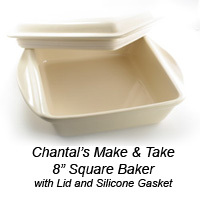
Tip
#4: Store leftovers in reusable containers with lids instead
of using plastic wrap or foil to cover. Chantal's "Make and
Take" stoneware with its natural glaze has a silicone gasket
on the lid for secure storage.
Tip #5: Defrost frozen foods
overnight in the refrigerator capturing the cool energy to help
power the refrigerator. (It's also a good idea for food safety
reasons to defrost in the refrigerator).
Tip #6: Vacuum the coils of
the back of your refrigerator regularly for efficient energy
transfer.
Tip #7: Do
we need to say this? Don't stand with the refrigerator door open
mulling over your possible
selections.
|
Q & A's
|

Q: My slow cooker is "on" for hours
each time it's used. Is this energy efficient?
A:Newer slow cookers are very
energy efficient and even though they are "on" for long periods,
they use very little energy in maintaining their low cooking
temperatures. All-in-one meals made in a slow cooker will maximize
the energy usage.
 Q: Why should I change from incandescent
lighting to compact fluorescent lighting
(CFL)? Q: Why should I change from incandescent
lighting to compact fluorescent lighting
(CFL)?
A:Your
kitchen may be the last holdout for switching to CFL bulbs because
of unique "spots" or "floods." CFL's are now available in many of
these unusual shapes and sizes. Changing light bulbs is one of the
simplest and most impactful things we can do to conserve energy.
About 90% of the energy used by an incandescent bulb is given off as
heat, not lighting! A CFL bulb uses only 25% the amount of energy
that an incandescent bulb does.
Q: What are micro-fiber cloths, and how do
they work?
A:Now
available are many micro-fiber products that can be used for most
cleaning tasks in the kitchen and throughout the house. Micro-fiber
cloths and a little water accomplish most cleaning tasks without any
chemical agents! Micro-fibers are a Swedish invention where
microscopic threads create a special surface that grabs and captures
molecules of dirt, grease, and even some germs. A micro-fiber cloth
will last through several hundred
launderings.
|
Cookbook
Review
|
Big Green
Planet Cookbook by Jackie Newgent, RD. Copyright 2009.
Published by John Wiley & Sons, Inc., Hoboken, NJ. Copyright
2009.
 Cooking consciousness is raised with a cookbook
like the Big Green
Cookbook. The author presents hundreds of delicious recipes
and gently guides us to greener cooking habits along the way. She
begins her mentoring with the structure of the book; recipes are
grouped according to the season. This organization helps us
transform our farmer's market trips in a purposeful direction with
inspiration for the changing bounty. The tutorial continues with
plentiful tips and instruction in each recipe's sidebars. We're
taught about "lid cooking," serving in "peels," and turning off the
burner a minute or two early and allowing residual heat to finish
the task. Ms. Newgent brings an energy and humor to her writing that
is contagious and enabling in helping us shift our cooking habits. Cooking consciousness is raised with a cookbook
like the Big Green
Cookbook. The author presents hundreds of delicious recipes
and gently guides us to greener cooking habits along the way. She
begins her mentoring with the structure of the book; recipes are
grouped according to the season. This organization helps us
transform our farmer's market trips in a purposeful direction with
inspiration for the changing bounty. The tutorial continues with
plentiful tips and instruction in each recipe's sidebars. We're
taught about "lid cooking," serving in "peels," and turning off the
burner a minute or two early and allowing residual heat to finish
the task. Ms. Newgent brings an energy and humor to her writing that
is contagious and enabling in helping us shift our cooking habits.
|
Three Green-Cooking
Recipes
|
Recipes
excerpted from Big Green
Cookbook by Jackie Newgent, RD. Published by John Wiley &
Sons, Inc. Hoboken, NJ. Copyright 2009. Reprinted with permission of
the publisher. All rights reserved.
 Lemon-Pistachio
Quinoa Pilaf Lemon-Pistachio
Quinoa Pilaf
Light, fast, and
satisfying! This pilaf cooks with a minimal amount of stovetop
energy. Bring the water to a boil, then turn off the heat and let
stand with the lid on. Quinoa, full of whole-grain goodness, has the
highest amount of protein among grains. The lemon adds brightness,
and the pistachios bring crunch and color. It's versatile as an
entrée, or as a side dish.
View and
Print
 Sweet
Onion Quesadilla Sweet
Onion Quesadilla
with Strawberry-Serrano
Salsa
Just in time for
Cinco de Mayo! This quesadilla variation sports fresh flavors and
bright colors. The nutty flavor of the whole-wheat tortillas
combined with the sweet onion is a delicious combination. Use a
microwave to wilt the onion for minimal energy use. The strawberry
salsa is a great springtime variation for these
quesadillas.
View and
Print
 Baby
Spinach Orzo Salad Baby
Spinach Orzo Salad
Full of
veggies, this orzo salad may
be served warm or cold. The orzo is cooked with minimal heat by
bringing the pot to a boil, then standing with a lid on for the
remaining cooking time. This method has the advantage of returning
perfectly cooked orzo. Lemon, fresh herbs, cucumber, and tomatoes
finish the salad. We added some chopped Kalamata olives for extra
color contrast and flavor.
View and
Print
| |